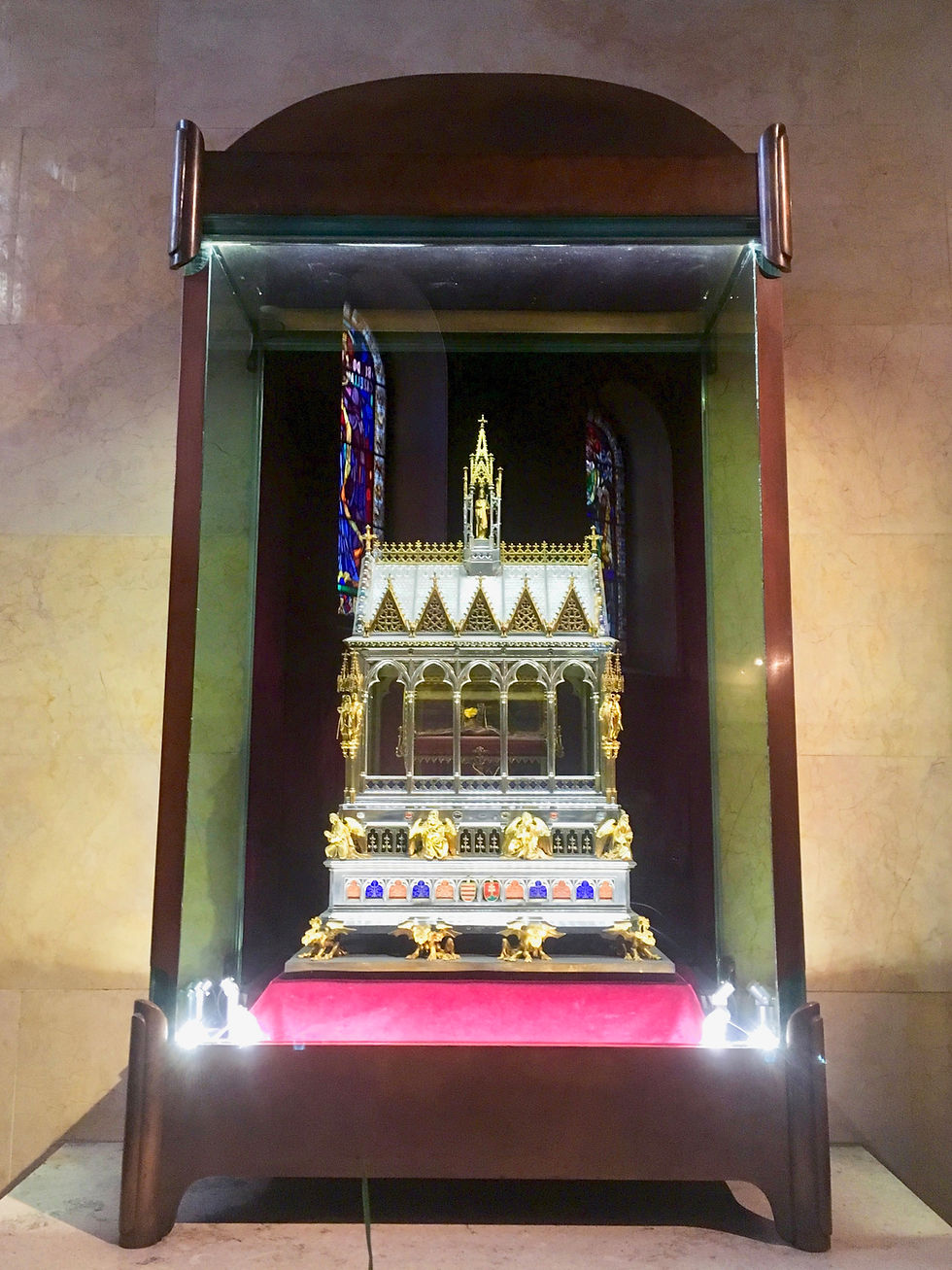
Budapest is the capital city of Hungary and among the most picturesque cities in Europe. Struck in half by the Danube River, its two parts, Buda and Pest, make up a riverside that is dotted with beautiful, centuries-old architectural landmarks. Connected only by bridges across the river, the two sides are distinctly different as the lofty hills of Buda are topped with castles and the plains of Pest bustle with life. Wander through charming streets and see the unique sights of Budapest that make the city a UNESCO World Heritage Site and an incredible place to visit.


The most recognizable icon of Budapest is likely the Hungarian Parliament Building on the Pest side of town. Its Gothic Revival style facade and spires overlook the river waters amid a sweeping square. It has been the largest building in Hungary since its completion in 1904 and was intended to represent the recently united Buda, Pest, and Óbuda cities under Budapest in 1873. If you visit Budapest in Spring, the Parliament Building's surrounding greenery, among which are lavender and other purple flowers, gives the site a pop of color.



Nearby on the north side of the Parliament Building, you can find a monument of István Tisza, Hungary's prime minister from 1903-1905, topped with a lion strangled by a snake. Just opposite parliament toward the East, the intricate facade of Hungary's National Museum of Ethnography creates an interesting photo opportunity with the passing trams.




Return to the banks of the Danube, travel south, and you will then come across scattered pairs of metal shoes filled with wilted flowers and solemn candles. As a monument, the stretch of shoes commemorates the 3,500 people who were killed at the river's edge by Arrow Cross soldiers during the Second World War. The shoes represent all that was left behind when the victims were shot into the coursing waters below. Eight hundred of these victims were Jews, and the memorial is a mournful reflection of our recent visit to Auschwitz in Poland.


As we continue down the Danube River, the towering domes of St. Stephen's Basilica soon appear. After half a century of construction, the building was finished in 1905, and it is the most sacred Catholic site in Hungary. Named after the first king of Hungary, it has an intricately decorated interior and even houses King Stephen's mummified right hand, a holy artifact.



When the time comes to cross the Danube, the famous Széchenyi Chain Bridge awaits. A 375-meter-long symbol of Budapest, it was the city's first permanent stone bridge to cross the river and opened in 1849. It offers a new perspective of both the Buda and Pest sides of the city and is iconically watched over by a couple of stone lions at each end.




Walking from Pest to Buda, the chain bridge drops you off at the base of Castle Hill, a limestone plateau topped with medieval wonders. It sits 170 meters above the Danube, and the Budavári Sikló, a funicular tram, helps us make the steep crawl to the top. As you make the climb, looking out of the windows in its curious cubicle carriages reveals a beautiful view of Pest across the river.



Once you get off the tram at the very top of Castle Hill, it is almost as if you are suddenly transported into a different time. Greeted by the statue of the mythical Turul, a great falcon spreading its wings above the Danube, you find yourself surrounded by cobblestone streets, Baroque-style palaces, and more.


The main attraction here is the Buda Castle, the historical castle of Budapest's Hungarian kings since 1265. The building you see today, with its intricate facades and turquoise roofs, was built during the 17th century and currently houses the Budapest History Museum and Hungarian National Gallery. Explore the Buda Castle's surrounding grounds and find endless gardens and sculptures against the beautiful backdrop of the building's facade.




Just across the street from the Buda Castle is then the Sándor Palace, the official residence of the Hungarian president. If you are lucky, you might just catch the changing of the guards. Further down the Castle District lies the colorful Fisherman's Bastion with some of the city's best viewpoints overlooking the Danube and the parliament building on the other side.


Budapest, filled with remnants of its medieval and imperial past, is a unique city that captures what you would picture when you think of European charm. Centered on the Danube River, it's often surreal walking through the city streets passing its beautiful architecture and discovering its hidden gems.
How about you? Have you been to Budapest? If not, is it on your bucket list of places to go? I hope this takes you back to your visit there or inspires you to visit one day!
We visited Budapest in 2017 during our year-long trip around the world. Click on the link to read more!






Comments